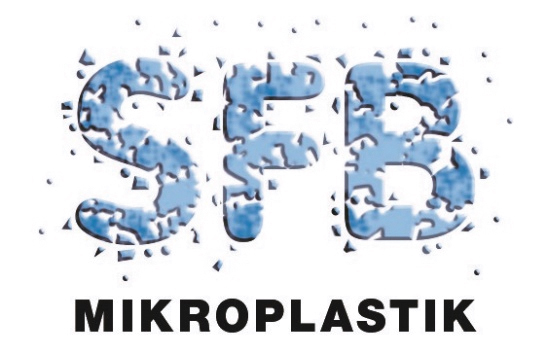A-Projects

Biological effects
A01: Effects of microparticles on aquatic model macrofauna depending on particle properties: Comparison of microplastics to natural particles
A01 addresses within the CRC 1357 the question of which properties of chemically complex and more realistic microplastic (MP) particles determine the effects on limnetic model organisms compared to corresponding reference particles that resemble naturally occurring particles. For these systematic studies, the effects of MP on fitness-relevant life history traits as well as at the molecular level (transcriptome, proteome, microbiome) will be analysed to elucidate the mechanisms underlying the effects. Since the 1st research phase further demonstrated that MP has predominantly sub-lethal effects and may influence biotic interactions, which may have wide-ranging consequences in an ecological context, these will be investigated in Daphnia using predator-prey and host-parasite interactions under laboratory conditions and in mesocosms. In combination with the molecular analyses of the model organisms, the obtained data will substantially help to shed light on the mechanisms underlying the effects of MP, depending on the physical and chemical properties of the particles, which can thus be considered in a broader ecological context.
Teilprojektleitende: Prof. Christian Laforsch, Dr. Thomas Fröhlich
A02: Effects of microplastic particles on model organisms of the soil-dwelling macrofauna and their associated microbiota
A02 will focus within the CRC 1357 on the effects of microplastic (MP) on terrestrial macrofauna in environmentally realistic scenarios. We will comparatively characterise the effects induced by aged MP-particles measuring fitness-relevant life-history traits and stress reactions, facilitating a better understanding how effects are mediated. Aside from direct effects, the organisms may be indirectly affected via alterations in their microbiome or changes in physical-chemical properties of the soil. These baseline ecotoxicological data should facilitate a better understanding and allow predictions of MP-effects on organisms.
Teilprojektleitende: Prof. Heike Feldhaar
A03: Characterisation of molecular and histological effects of MP particles in tissue (sections) of aquatic and terrestrial model organisms
A03 investigates within the CRC 1357 changes in the tissue of terrestrial and aquatic model organisms caused by chemically complex and realistic microplastic (MP) particles. In the 1st funding period (FP), far-reaching methodological advances were made, combining imaging mass spectrometry (MS imaging) with complementary methods, particularly Raman and FTIR imaging. By linking these data with histology in the same slice, morphological and molecular changes can be directly correlated, allowing conclusions to be drawn about MP's different processes and mechanisms of action with different physical and chemical properties. In the 2nd FP, the spectrum of methods will be expanded again, e.g. through tissue clearing, the direct analysis of proteins and procedures with higher spatial resolution. In addition to tissue sections A03 examines in this FP also cells and tissue models. A03 thus represents within the CRC 1357 the link between the organismic (A01, A02, A06) and cellular (A04, A05) subprojects.
Teilprojektleitende: Prof. Christian Laforsch, Prof. Andreas Römpp
A04: Cellular uptake of microplastics as a function of basic particle properties
A04 is analyzing within the CRC 1357 the interactions of MP with cells depending on physical and chemical particle properties (i.a. eco-corona, ς-potential, surface mechanics, particle shape and additives) as well as the mutual influence of these properties (e.g. the influence of the eco-corona on the ς-potential). To study more realistic particle shapes and cells, our studies will be extended to fibers and irregularly shaped particles as well as primary cells from aquatic and terrestrial organisms. As methods, flow chambers, optical tweezers and model particles with polyelectrolyte-multilayer-coatings will be applied among others.
Teilprojektleitende: Prof. Holger Kress, Prof. Andreas Fery, Prof. Christian Laforsch, Dr. Günter Auernhammer
A05: Effects of microplastic interactions at the cellular level
A05 investigates the effects of MP on cells and microtissues. While work in the 1st funding period (fp) focused mainly on single cells, in the 2nd fp this will shift to increasingly complex multicellular systems. Epithelial tissue (mimetics) and macrophages will be hierarchically organized and polarized (transwell cultures, spheroids). The experiments using primary cells of the model organisms established in CRC 1357 will be expanded and related to the effects observed in the respective organism. Thus, in the 2nd fp it is envisioned to increasingly close the gap between cellular and organismic response.
Teilprojektleitende: Prof. Ruth Freitag, Prof. Thomas Scheibel
A06: Microplastics in the rhizosphere of crop plants - effect on physical, chemical and microbial processes in soil
A06 deals with the effects of chemically complex and environmentally relevant MP particles in the soil-microbe-plant system with a special focus on changes in soil aggregation, soil chemistry and soil microbiology in the rhizosphere of crops. Based on FP1, the subproject addresses the question of which properties of environmentally relevant MP lead to changes in the rhizosphere and how these affect the companion plants such as maise and strawberries. In doing so, the sub-project emphasises comparing conventional MP with biodegradable plastics, whose effect on soil chemistry and soil microbiology could be considerably more significant. The 2nd FP is expected to yield findings that contribute to the ecotoxicological assessment of MP for microorganisms in soils and, therefore, for plants indirectly. In an SFB-wide soil mesocosm experiment, questions from project areas A, B and C will be investigated at the soil interface within the cross-sectional topics "migration-exposure probability" and "effects-aging".
Teilprojektleitende: Prof. Eva Lehndorff, Prof.Tillmann Lüders

